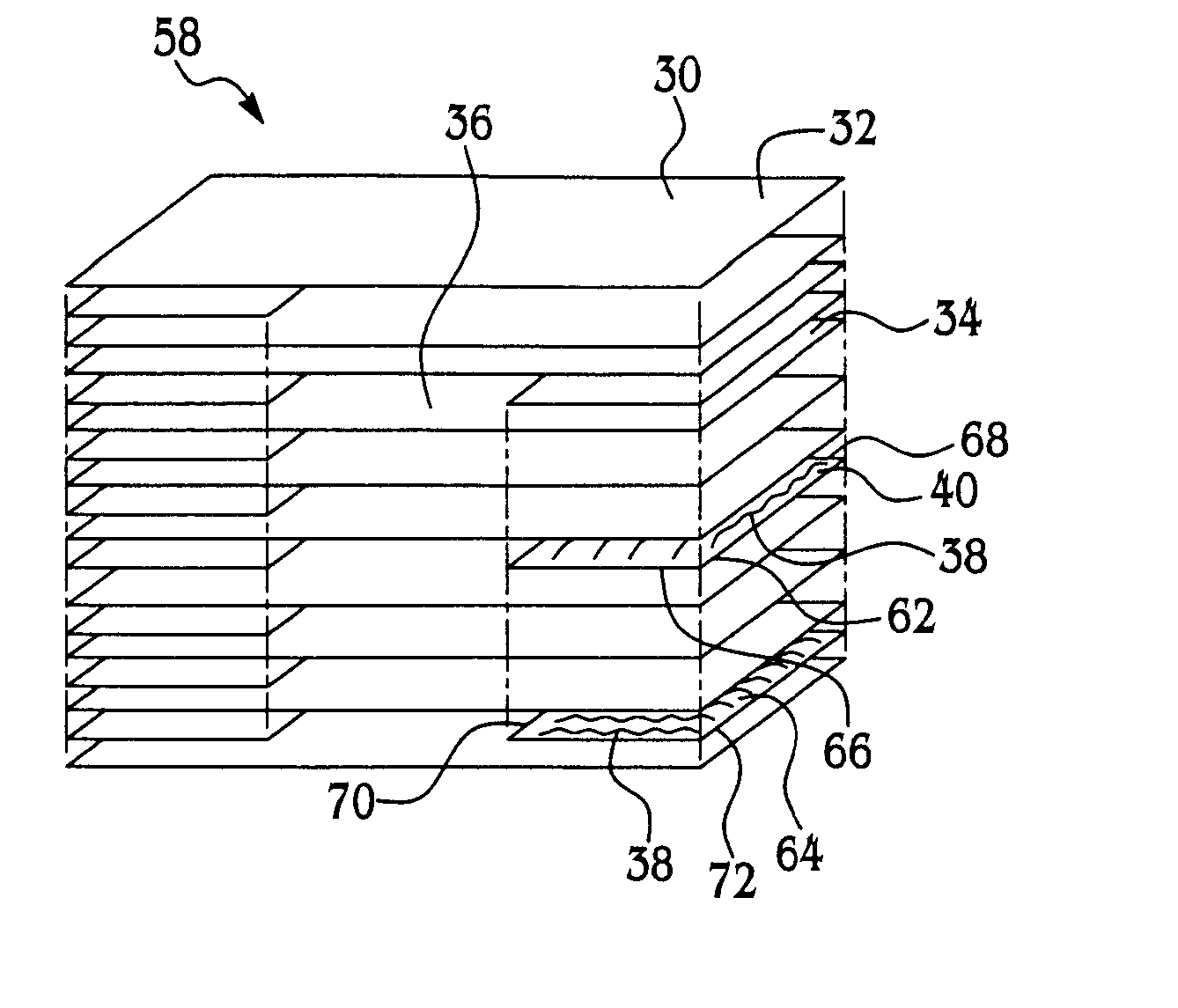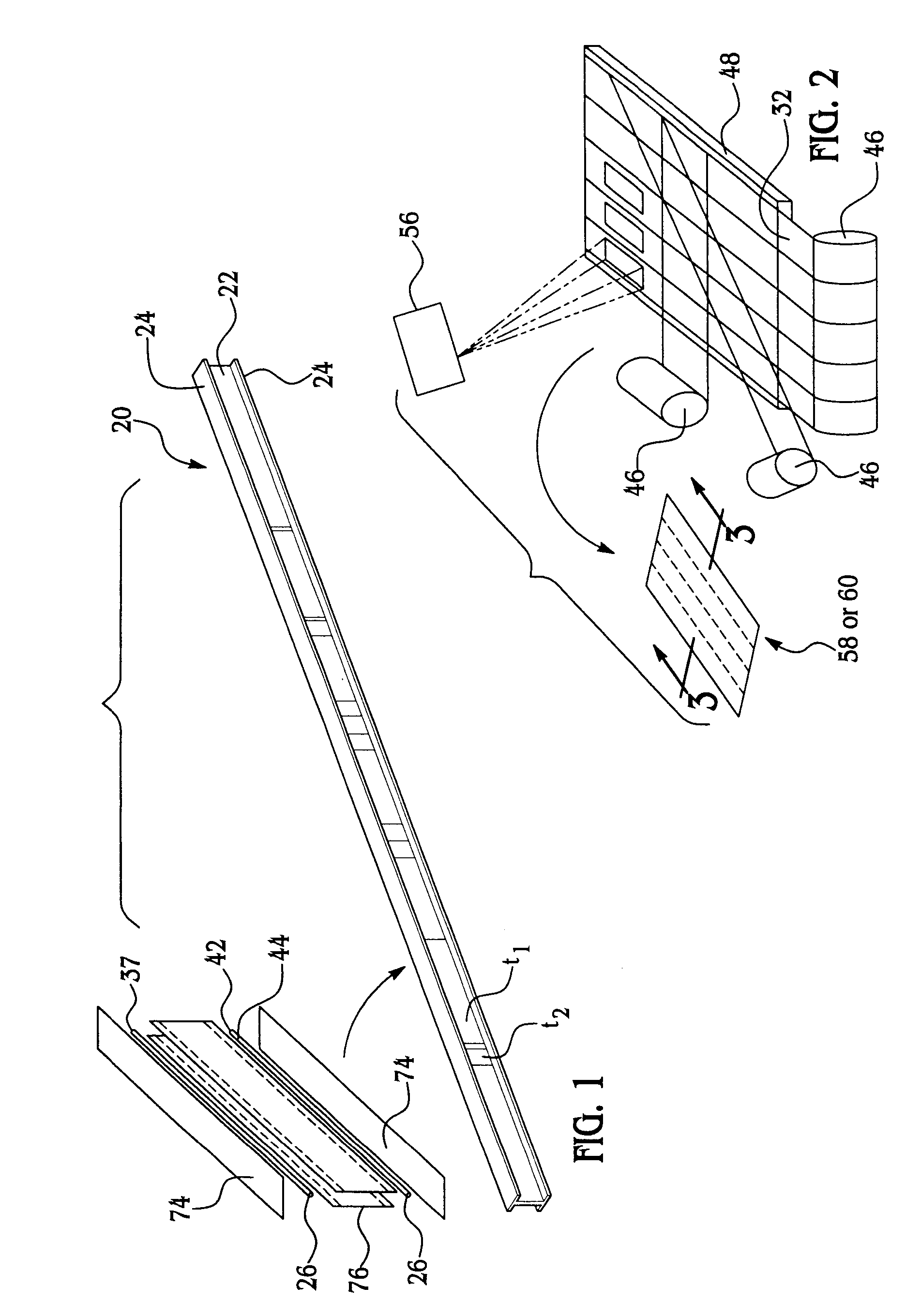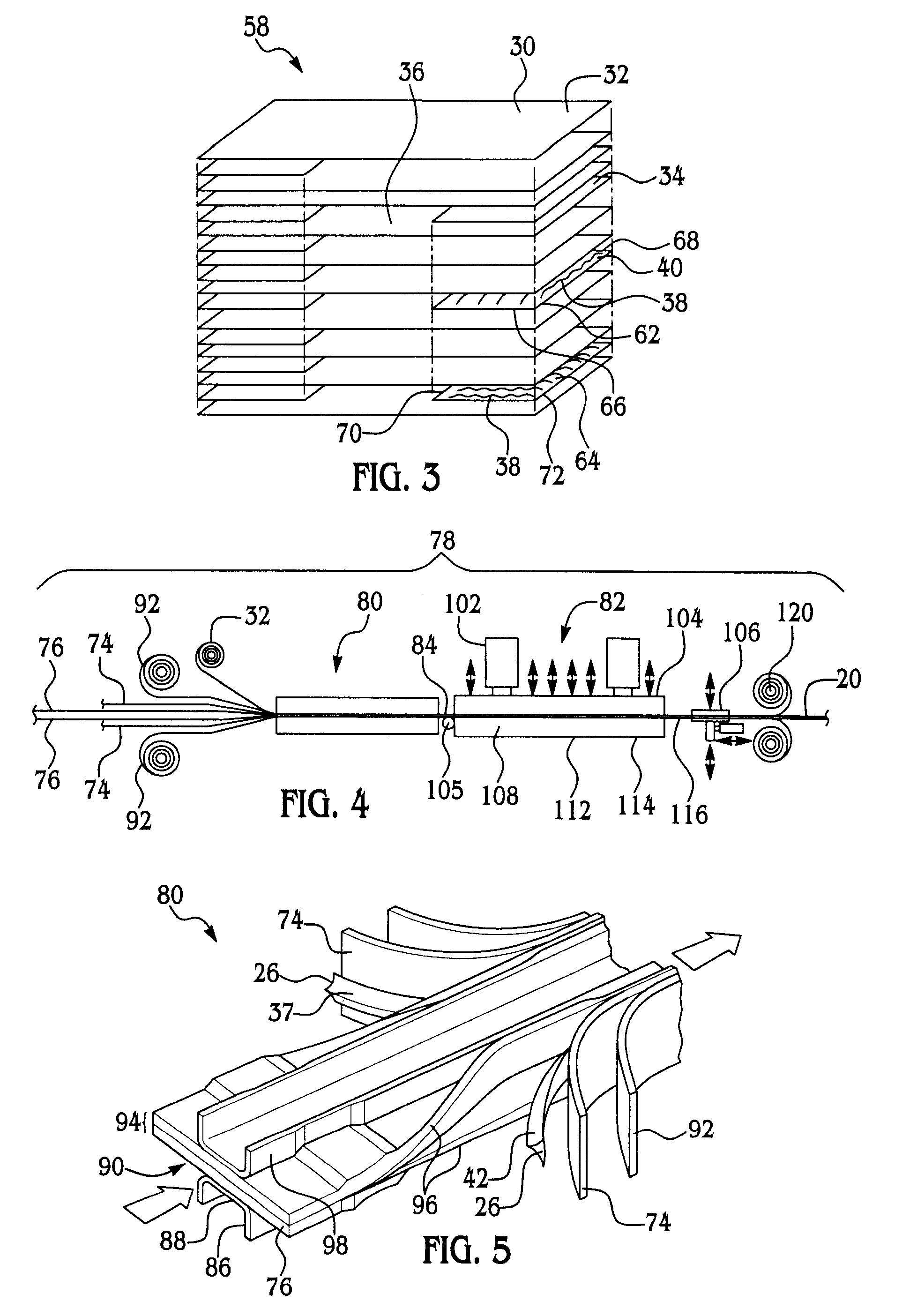Continuous Fabrication of Parts Using In-Feed Spools of Fiber Reinforced Thermoplastic
a technology of fiber reinforced thermoplastic and infeed spools, which is applied in the direction of wood veneer joining, manufacturing tools, bandages, etc., can solve the problems of reducing the automation of the fabrication process, labeling, and storing individual lengths of thermoplastic materials, and reducing the need for cutting, sizing, and sizing. the effect of individual lengths
- Summary
- Abstract
- Description
- Claims
- Application Information
AI Technical Summary
Benefits of technology
Problems solved by technology
Method used
Image
Examples
Embodiment Construction
[0034] The illustrated embodiments provide a novel fabrication method of forming a thermoplastic composite (“TPC”) laminate material with tailored and varying thicknesses in a continuous process. The embodiments find applicable uses in a wide variety of potential applications, including for example, in the aerospace industry. The disclosed method is ideally suited for forming thermoplastic composite stiffened members in the supporting framework of an aircraft fuselage. Potential examples of thermoplastic composite stiffened members include but are not limited to fuselage skins, wing skins, control surfaces, door panels and access panels. Stiffening members include but are not limited to keel beams, floor beams, and deck beams. For illustrative purposes only, the method will initially be described in reference to forming a thermoplastic composite floor beam 20 for use in a commercial aircraft fuselage. However, while an I-section is shown, other stiffened member geometries such as Z-...
PUM
| Property | Measurement | Unit |
|---|---|---|
| Length | aaaaa | aaaaa |
| Thickness | aaaaa | aaaaa |
| Angle | aaaaa | aaaaa |
Abstract
Description
Claims
Application Information
 Login to View More
Login to View More - R&D
- Intellectual Property
- Life Sciences
- Materials
- Tech Scout
- Unparalleled Data Quality
- Higher Quality Content
- 60% Fewer Hallucinations
Browse by: Latest US Patents, China's latest patents, Technical Efficacy Thesaurus, Application Domain, Technology Topic, Popular Technical Reports.
© 2025 PatSnap. All rights reserved.Legal|Privacy policy|Modern Slavery Act Transparency Statement|Sitemap|About US| Contact US: help@patsnap.com



